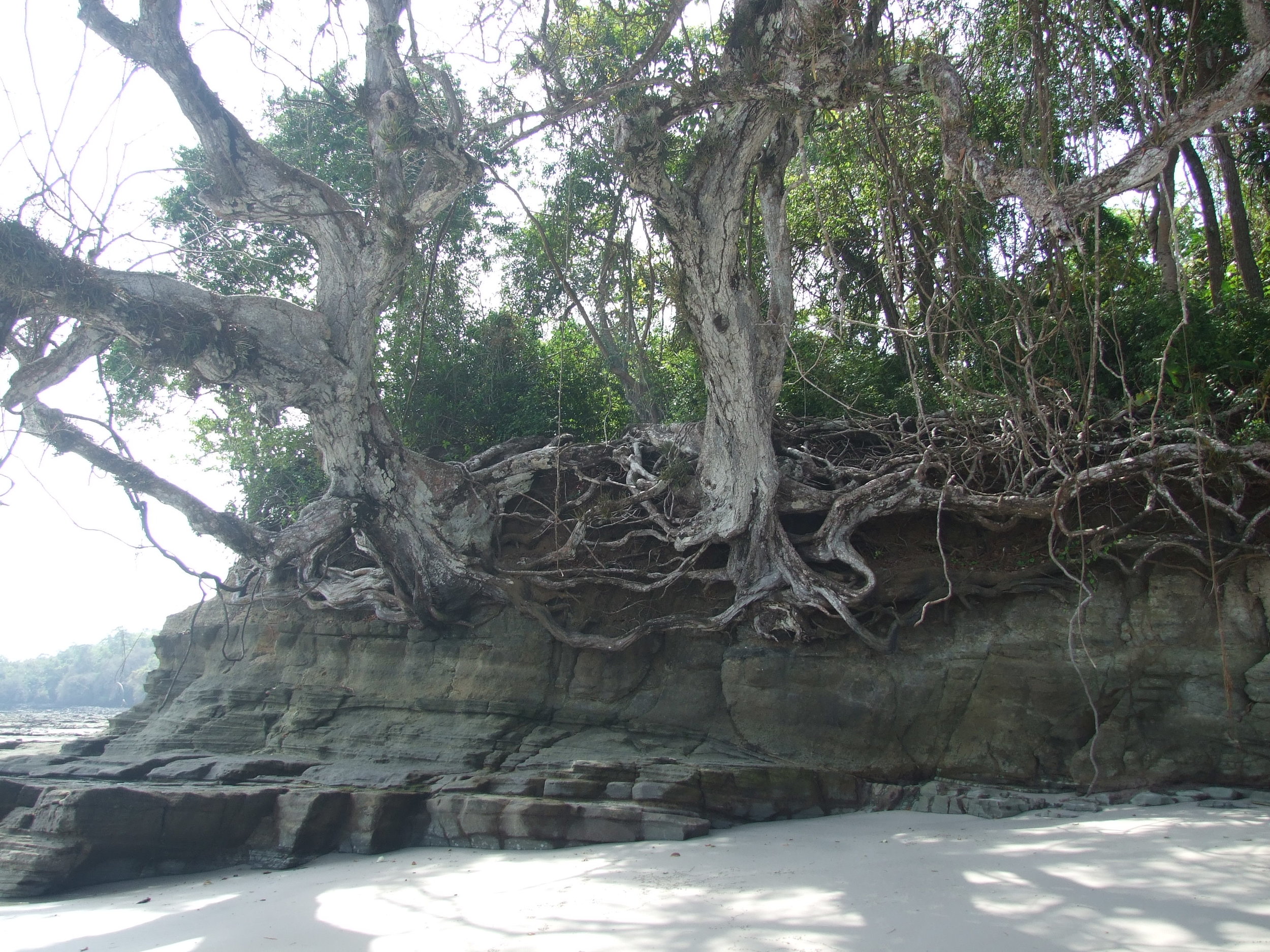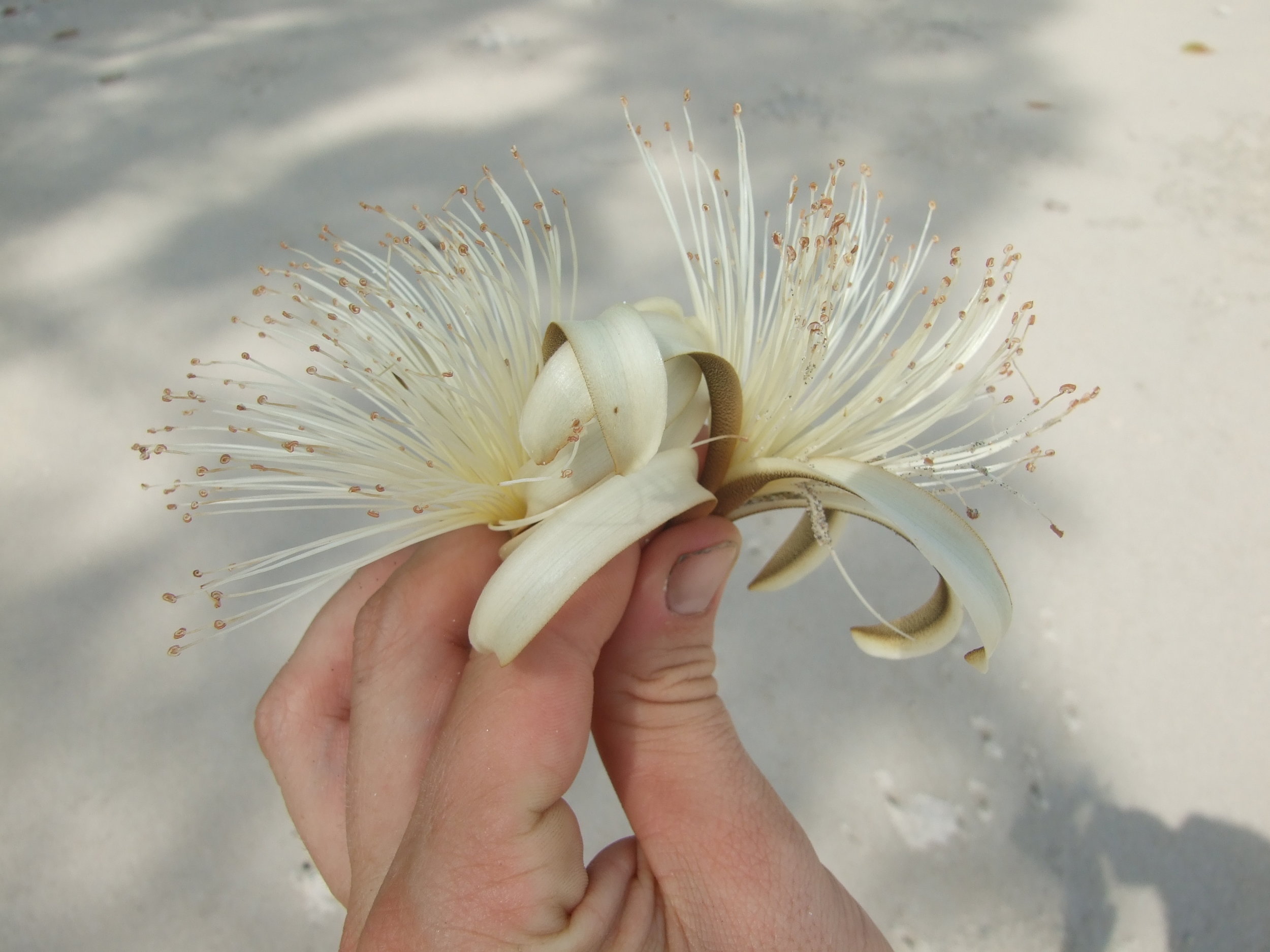passiflora-soberania
Found this Passion flower variety in Soberania National Park, Panama. Need to go back and get a photo of the leaf.
passiflora-soberania2
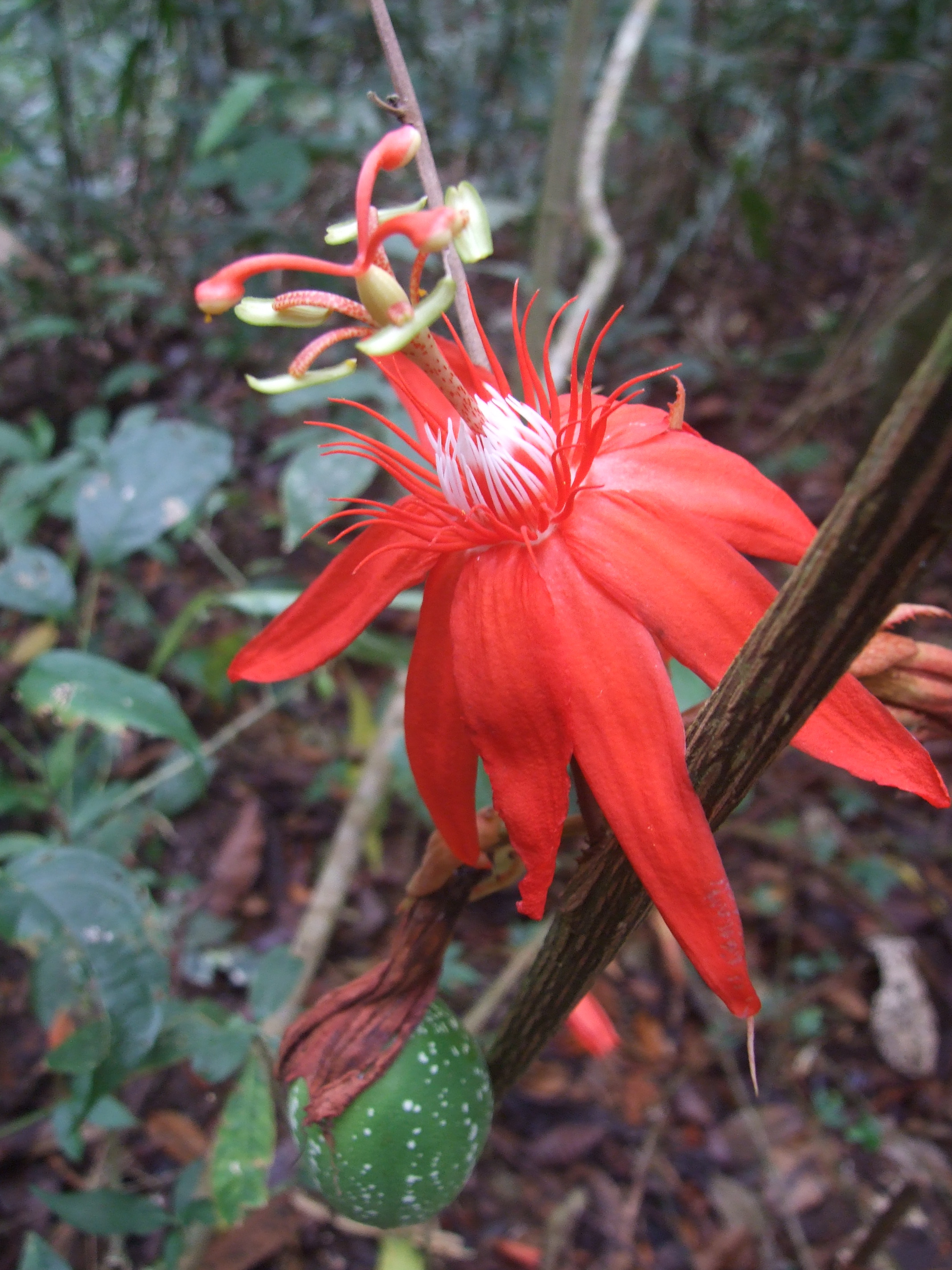
passiflora-soberania
Found this Passion flower variety in Soberania National Park, Panama. Need to go back and get a photo of the leaf.

passiflora-soberania2


Two views of three small trees and a shrub. The trees are, starting from forward left hand corner in the photo directly below are: Matacora (Jatropha cuneata), Torote Prieto (Bursera hindsiana), and Palo Verde (Cercidium microphyllum).

The Pitaya Dulce is another common cactus on the Baja peninsula. The nocturnal flowers are cream colored and bloom at night, closing the following morning. The Cactus bears an excellent spiny fruit about the size of a tennis ball containing sweet, pink flesh, with a flavor reminiscent of watermelon. The fruit pulp can be eaten fresh, or dried in the sun for future consumption. My Baja California field guide by Norman Roberts includes these interesting anecdotes concerning the Pitaya Dulce: That "Missionaries' records indicate the natives were generally hungry except during Pitaya season. Then they gorged on this wild harvest, spending the entire season in a state of euphoria." And that "the Natives defecated at a particular spot on the trail, later gathering their own dried feces to collect the tiny black Pitaya seeds that had passed through their intestinal tract undigested. These seeds were then ground into a meal to be eaten as a pozole. This was called "the second Pitaya harvest". The missionaries were thoroughly disgusted with this harvest and castigated the Aborigines for it." Of course, the missionaries never successfully survived for thosuands of years in this seeminly inhospitable landscape, which doesn't give them much room for criticizing the native inhbitants for their methods of adaptation.
The book then includes a note about the superb daiquiris that can be made from the Pitaya fruit.
The flesh of the Pitaya is traditionally used as snake-bite medicine, applied directly to the afflicted site.

This, I am pretty sure, is a young Old Man Cactus, growing on a ridge overlooking Bahia Magdalena in Baja, Mexoco. When the cactus gets larger gray, hair-like spines grow out of the top, giving it a whiskered look, akin to an old man. The Cactus has small, pale pink flowers in the spring, which open at night, pollinated by bats and insects. Indians used to make tea from the cooked, sliced stalks to help relieve ulcerated stomachs. On the Mexican mainland slices of this species are sold in markets, used as a treatment for stingray wounds. The chopped stems were used to stupefy fish, also used as cattle forage.
The small red fruit was eaten by aborigines when other food was scarce.
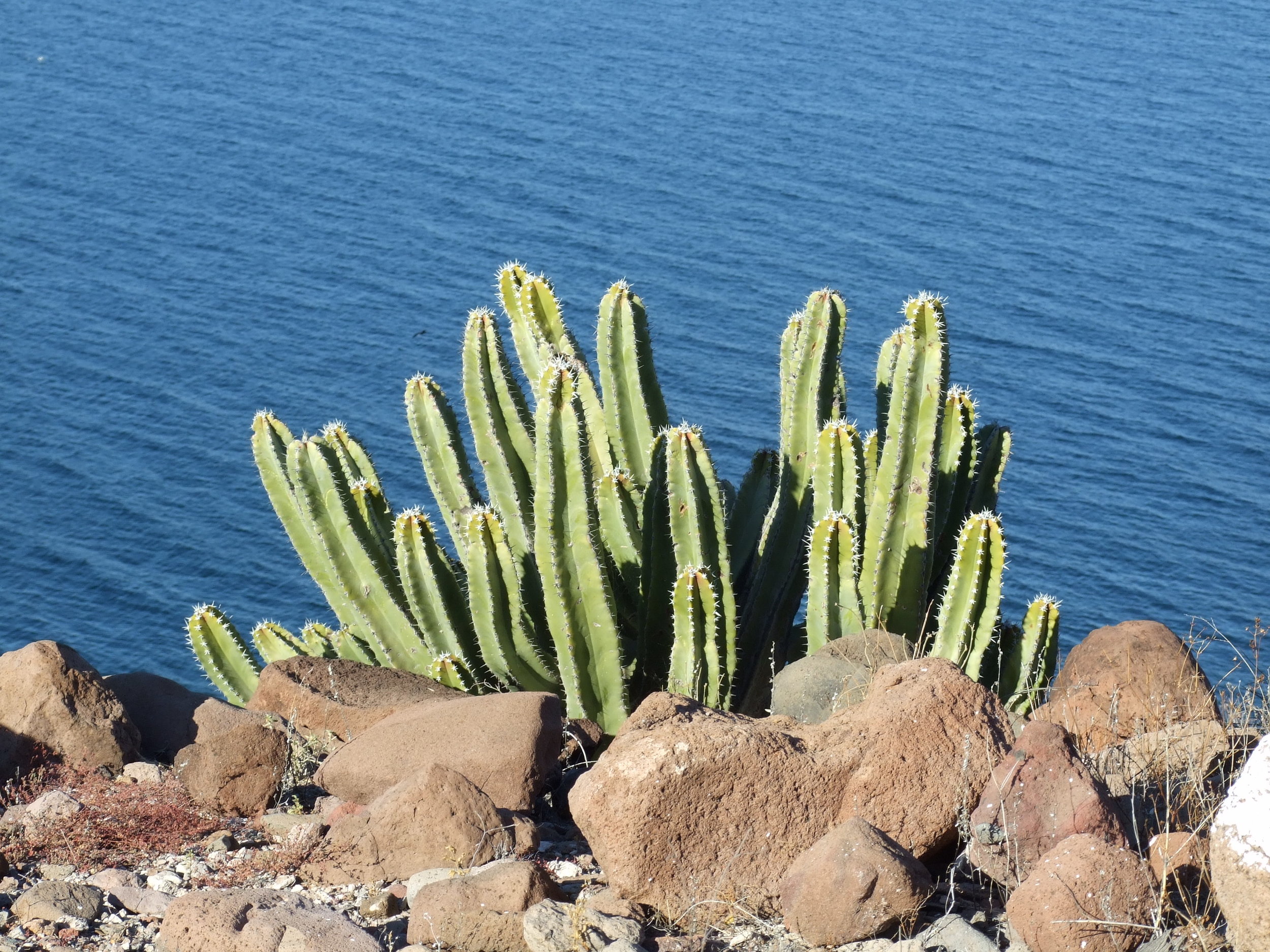
Not exactly sure what genus/species these are, maybe Ferocactus spp.?
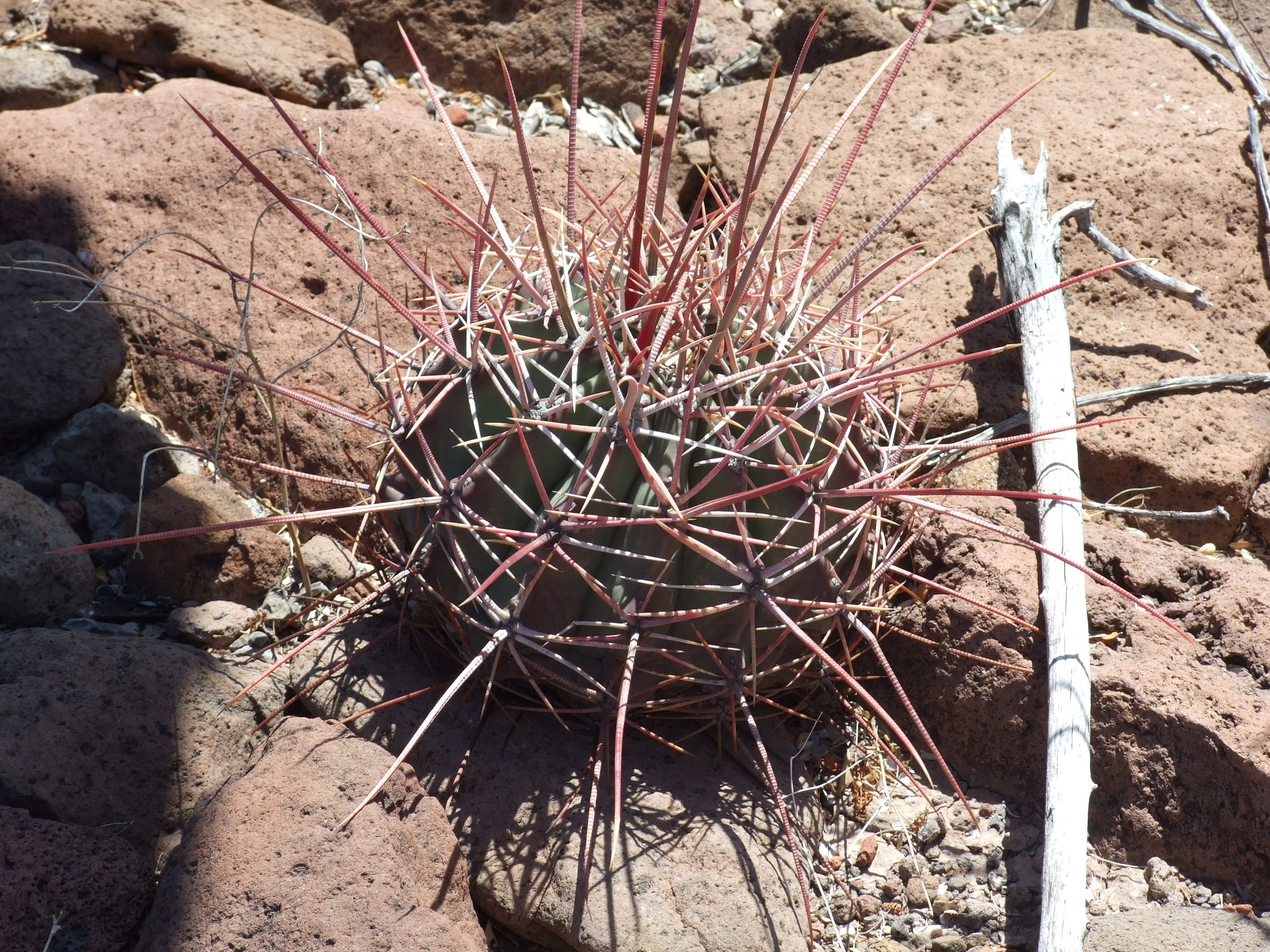
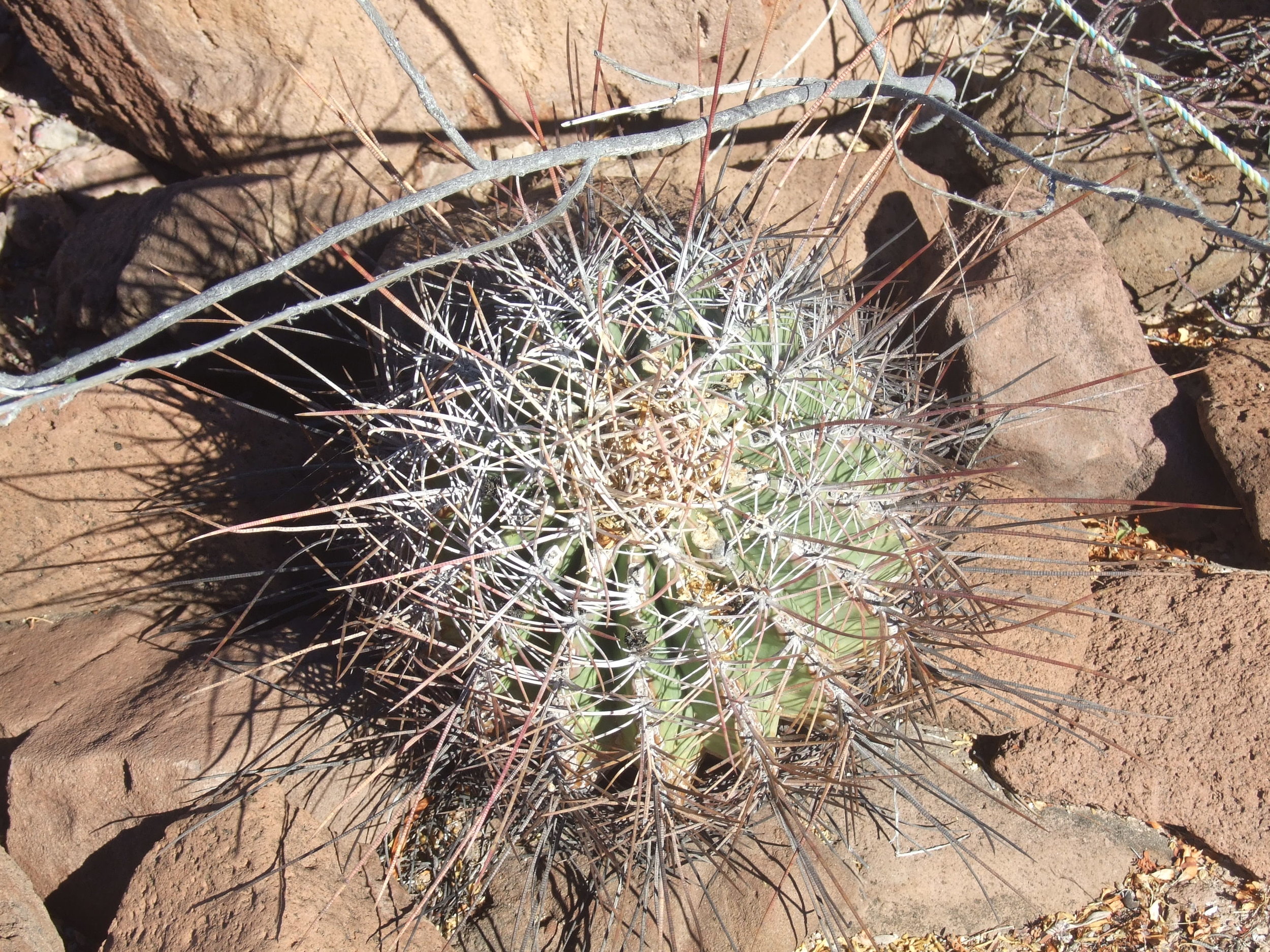
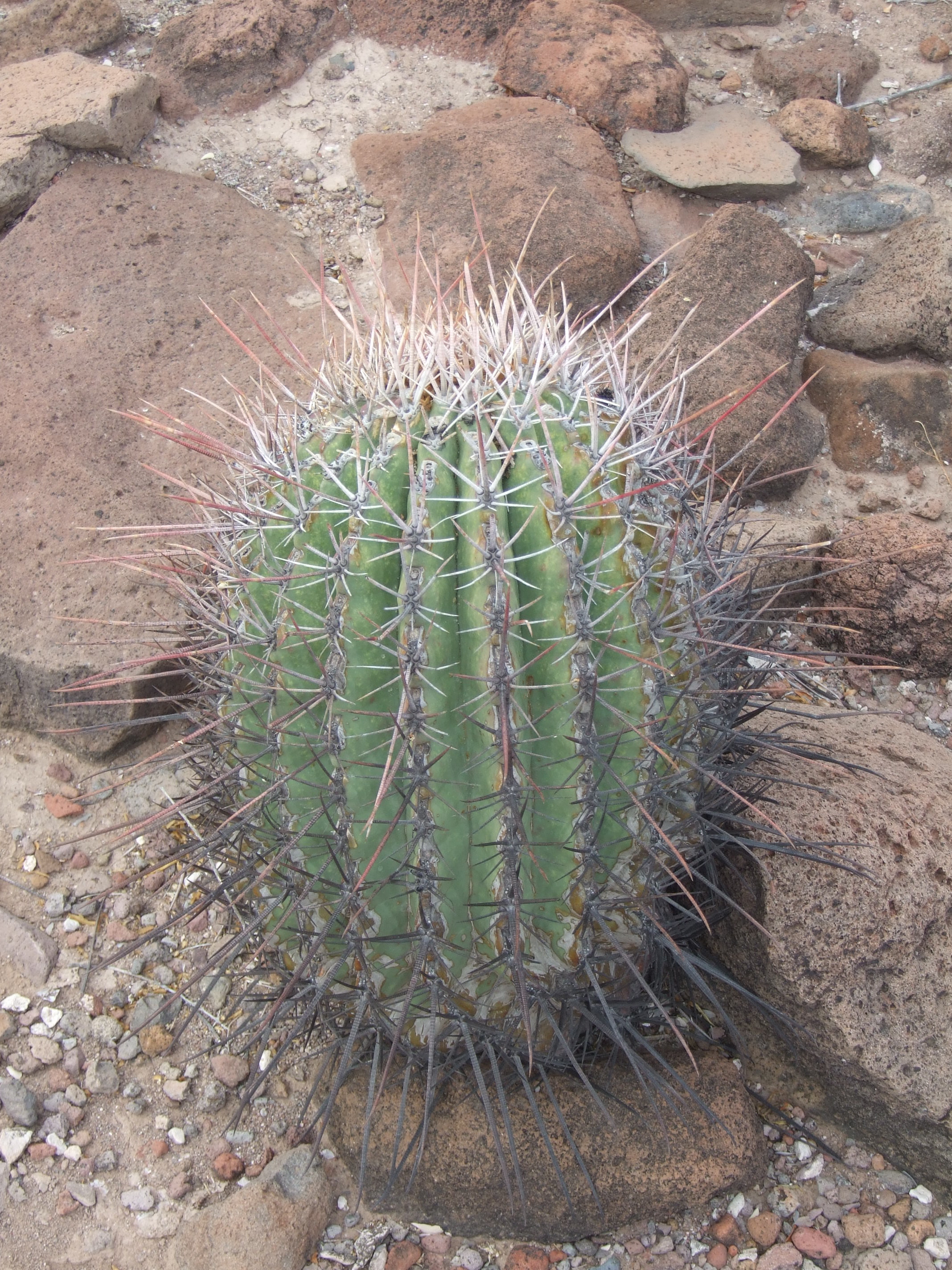

micro-orchid
Found this very-small orchid on a fallen branch in the National Park on the way to Gamboa, lowland, dry tropical forest.
Turks & Caicos native orchid, incredibly fragrant flowers on a chest-high spike, can be found growing on the edge of the beach in sand and limestone. The photo that I took (below) was used at www.orchidspecies.com, an incredible and extensive resource documenting the orchid species of the world.
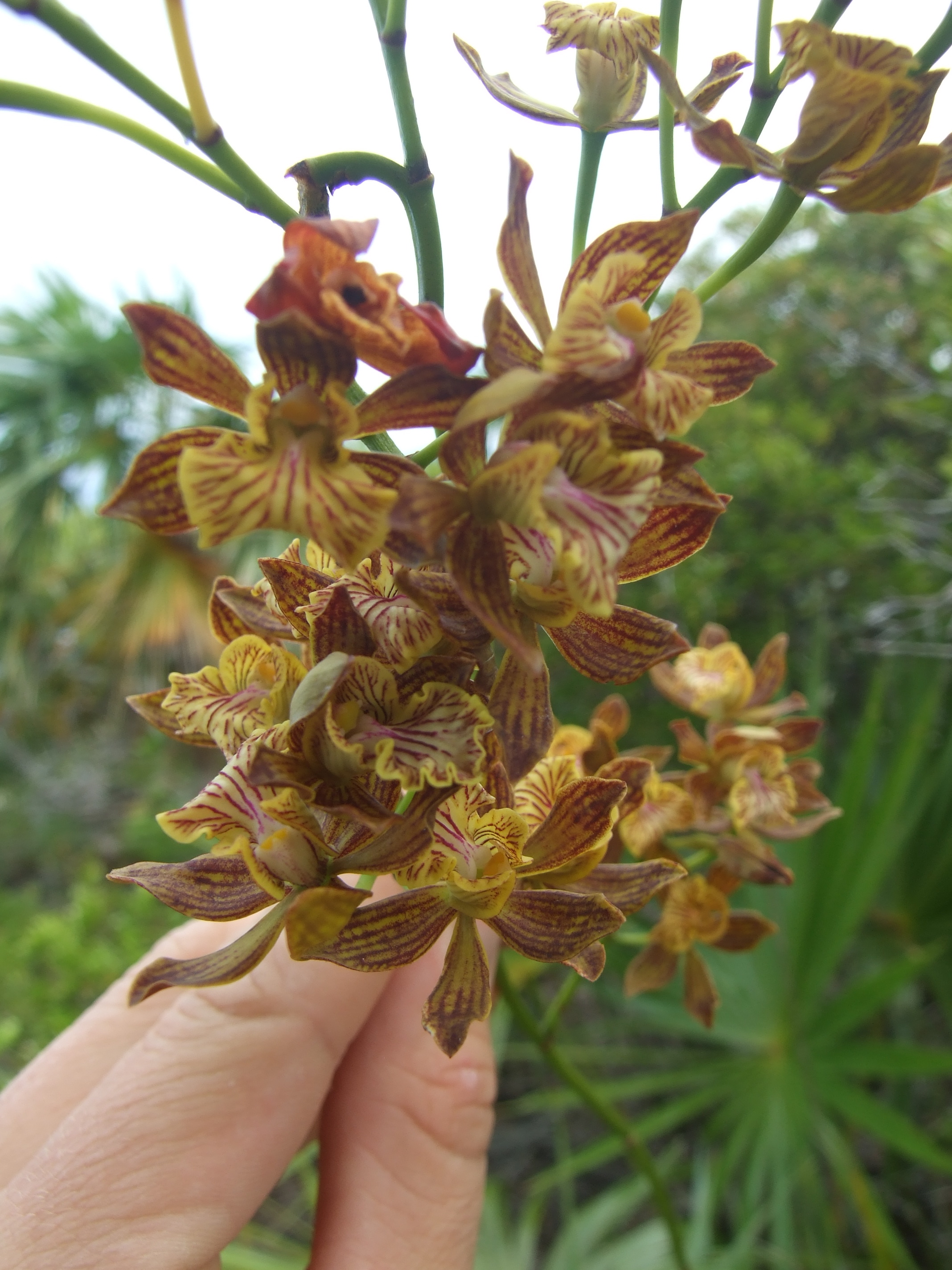
I'm pretty sure these are P. quinata trees, the photo was taken on a beach off the Caribbean coast of Panama. This is a fairly common tree in the area, its wood highly prized for its durability, widely used to make chairs, doors and other such craft.
